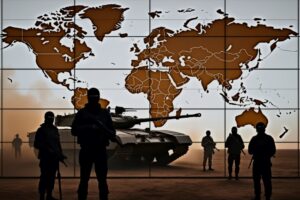
Was the October 7 conflict largely predictable? Israeli futurist David Passig predicted many years ago a mega-war in the Middle East around 2020. His forecasting method was rooted in long-term cycles of regional instability and violence.
Passig recognized that roughly every 20 years, the Middle East experiences an escalation involving Israel, and a system-wide shock (war, uprising, realignment).
The 1948 War of Independence was followed by the Six-Day War in 1967, the first Intifada erupted in 1987, the Second Lebanon War in 2006, and the October 7 war in 2023.
However, Passig also noted that every 80–100 years the region undergoes a major reset of borders, empires, and power centers, a realignment of great-power influence, and the rise or collapse of regional orders.
World War I (1914–1918) saw the collapse of the Ottoman Empire and creation of the modern Middle East. Roughly 100 years later we are now in the midst of another deep reset (Arab Spring, Sunni-Shia realignment, US and Russia re-calibrating, Abraham Accords, major regional war).
From this standpoint, the October 7 war sits near the peak of the 80–100 year “reset wave.” That is, this was not an isolated conflict, but the culmination of an entire era of restructuring.
If we follow Passig’s shorter cycle (20–22 year), the next major regional conflict involving Israel will erupt in the 2040s.
Are Israel and Iran exhausted?
Meanwhile, the Middle East is currently in the late phase of restructuring. Such eras usually end with exhaustion of all key actors, the establishment of a new regional security architecture, and the emergence of stabilizing alliances and norms.
If this is the case, the regional system should gradually stabilize after the October 7 conflict. A new mega-crisis of similar magnitude would not normally erupt in the next two decades, give or take a few years.
In practical terms, this means that another October-7-level shock is unlikely in the 2020s–2030s. Fighting another large-scale war would require new generations, new alliances, and new triggers.
Based on this logic, the next real “mega-war window” will open only after 2040. This will happen when the next generational cohort becomes politically dominant, regional power balances shift again, and unresolved tensions build up.
However, limited conflicts and clashes are still possible: Shorts rounds of fighting in Lebanon, Gaza flareups, or brief skirmishes with Iran.
But will the cycles of war and upheaval still hold in the 21st century? In a world of rapid technological change and a Mideast that remains fractured and volatile, the shadow of war will continue to linger on the horizon.


